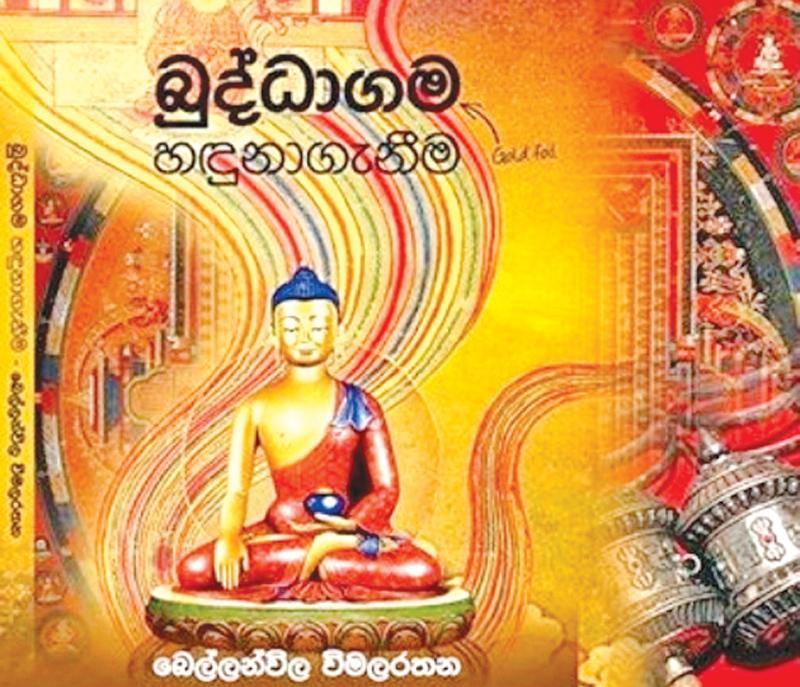
The erudite, scholarly “Buddha Putra, Prof Bellanwila Wimalaratana Nayaka Thera, Chancellor, University of Sri Jayawardhanapura, has published his 19th Book titled, Buddhagama Handunageneema. (What is Buddhism? Or Understanding Buddhism).
This well printed book on Buddhism consists of 125 pages with 55 colour photos of good quality. The Venerable Nayaka Thera analyses the concepts of Theravada – Mahayana – Vajrayana and Zen Buddhist philosophies in detail. At the conclusion of the book, the learned Nayaka Thera sums-up the chronology of Buddhist History from the sixth century B.C. to 20th century A.D.
Prof Wimalaratana’s style and forte of writing is simple and devoid of difficult Sinhala words. Therefore, even the common man can easily understand the contents clearly. The book includes some finer points of Buddhism. It is a treat to read, the contents well written and highly educative.
Prof. Wimalaratana’s ‘Masterpiece’, traces and provides a detailed account of the Most Ven Buddhogosha – of Gaya, India, who wrote the brilliant Vissiddhimaggha.
The writer has included a photograph of a painting from Kelaniya Rajamaha Viharaya, where the learned monk Buddhagosha presents his book to the monks of the Mahavihara, Anurahadhapura. It adds colour to this article.
Sri Lankans have followed Theravada Buddhism from time immemorial. Therefore, they are not so conversant with Mahayana Buddhism. Prof Bellanwila Wimalaratana in his complete book on Buddhism, enlightens us on Mahayanism too. This is clearly shown in the “Ten Occurrences of Dasabumika Sutta” in the Mahayana concept.
Vajirayana Buddhism, is popular and followed in Tibet and Bhutan. The Vajira Symbols of Jantric Buddhism and the chapter on Lamas and Dali Lama are a source of knowledge.
It shows the venahil knowledge of Buddhism of Prof Wimalaratana Nayaka Thera. Zen Buddhism is practised in China and Japan.
The chapter titled “Popular Buddhism” deals with Theravada Buddhism, which is followed by Sinhala Buddhists.
Impermanence is a key word in Buddhism. Most of the Sinhala Buddhists are familiar with the popular stanza Anichchavatha Sankara. The Buddhist monks recite this stanza at funerals. Water is poured into an empty bowl, until it overflows and then offer blessings, and transmit merit to the departed. Prof. Wimalaratana Nayaka Thera explains the philosophy behind this ritual in this interesting publication.
Further details are found relating to the Vassana Period – Rain Retreat, and the merit that one will accrue, by offering Katina Vastra – Robes during the rainy seasons. Special mention is made on Kiriammawarunge Danaya – offering of alms to mothers. The Buddhists believe that it helps those affected with infectious diseases, such as, measles, chickenpox, etc. to control the spread.
The learned Prof Bellanwila Wimalaratana Thera, in his last chapter writes about the Propagation of Buddhism in western countries, from the 18th Century. Very valuable information is included in the final pages of the book titled, Chronology of Buddhist History.
I consider Buddhagama Handunageneema as a mini – encyclopaedia of Buddhism, and the reputed Printers Sarasaviya should be congratulated.
- Premasara Epasinghe
